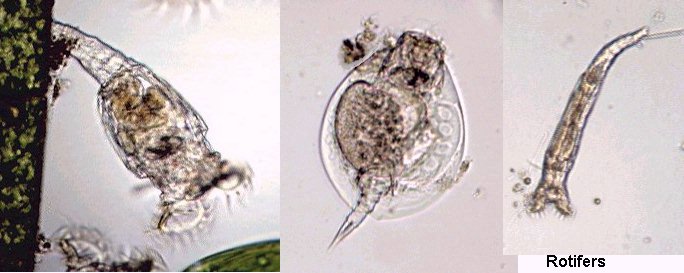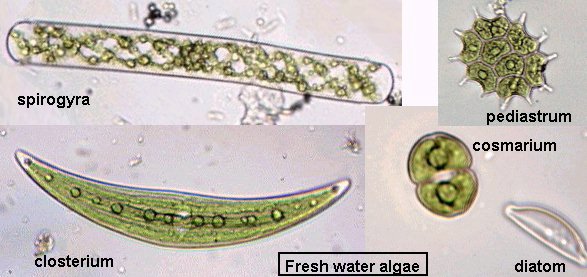 |
|
 |
|
 |
|
|
|
||||
| Outdoor subjects for the microscope can be a little difficult to find but are much more captivating! Once you've had a good meal on Christmas day, why not go for a short walk (and help your food digest!). Look at old walls or trees where you can find wet green mosses. Take a LITTLE fragment and, at home, put it in a small amount of water, wait awhile then squeeze the moss like a sponge and observe the liquid obtained under the microscope. You will probably find protozoans, rotifers, little worms ... (Don't remove lichens which don't usually contain many animals and the lichen take many years to grow.) |
 |
|
 |
|
 |
| If you come across a public garden with small artificial ponds or fountains, they probably contain some green deposits or filaments (microscopic algae) along the waters edge. (Don't fall into the water or trample on the lawns!). Place a little sample of these deposits and some mud in a small bottle and return quickly home to observe your find. You can probably see desmids, diatoms and if you leave the sample for a few days, rotifers and protozoans appear. |
 |
| For our friends who live in the southern hemisphere, it's the end of spring and you can find dead insects or butterflies; collect a little of 'dust' which is on their wings to view their beautiful scales. | |||
 |
|||
| By observing plants, even wild grasses, you can see some hairs on the stem. Make a small slit in the stem and pull off a fragment with small forceps (or use your mother's or sister's nail clippers; but don't forget to return them clean!). Mount the stem fragment in a drop of water under a coverslip and observe the great variety of hairs. (See my previous Micscape article on plant hairs). It's not really the right season, but some aphids or insect molts can be found in grass. Look closely at them. | |||
 |
|||
| These are only
some ideas to quickly start your microscopic observations and to hopefully
provide an amazing afternoon's viewing (or a weeks worth, perhaps?). You
will be captivated by the microscopic world, and perhaps like all of us,
from many countries and of various ages, you will join the great family
of amateur microscopists!
Winter is not the best season to observe nature; spring and summer provide richer discoveries ... I hope that by typing the keyword 'microscopy' into your favourite Internet search engine you will find this article, previous issues of Micscape Magazine and its whole library (see link below) for ideas of more and more subjects to observe . Merry Christmas and a Happy New Year. |
|
|
|
Microscopy
UK Front Page
WIDTH=1 All drawings and photographs © Jean-Marie Cavanihac 2001 Published in the December 2001 edition of Micscape Magazine. Please report any Web problems or offer general comments
to the Micscape
Editor,
Micscape is the on-line monthly magazine of the Microscopy
UK web
|